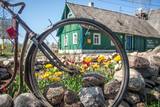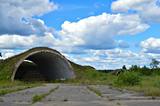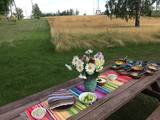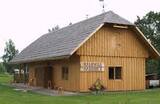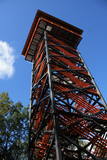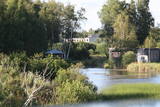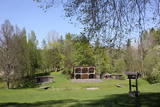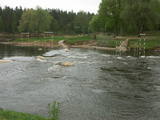| Nr | Name | Beschreibung |
|---|---|---|
|
Ap 100 gadus veca priežu audze, ko iesēja pagājušā gadsimta sākumā. Sēklu materiāls bija nācis no kādas Vācijas (Darmštatē) sēklu tirdzniecības firmas. Mūsu klimatiskajos apstākļos priežu stumbri izauga līki un kroplīgi. Savdabīgā audze labi redzama no šosejas malas.
|
||
|
The guest house is located in Varnja Old Believers village and on the Onion Route - a destination on the shores of Lake Peipsi, the largest lake in Estonia and the trans-border lake of the European Union. It is about 45 km from Tartu. It offers the oppurtunity to experience authentic accommodation in a real home of an Old Believer family. Everything from the furnishing up to spoons and forks is as authentic as possible. The house has three rooms that can accommodate up to 10 people. Additional services: smoke sauna, Finnish sauna, plastic sauna, sauna in a tent, outdoor hot tub, boat rental, bicycle rental, camping, lake safari on a Karakat (wintertime only), boat house accomodation. |
||
|
The craftsman uses experimental archaeological methods to produce the jewellery of ancient Baltic tribes. He will tell you about their symbolism, meaning and wearing traditions. You can tour the workshop and purchase jewellery that has been made there. |
||
|
Früher war der Flugplatz von Vaiņode einer der größten militärischen Flugplätze der Sowjetunion in baltischen Staaten. Noch zuvor in der Zeit des Freistaates Lettland war hier die Station der ersten lettischen Luftschiffe. Die Flugzeughallen der Luftschiffe wurden abgebrochen und nach Riga transportiert. Heutzutage befindet sich in diesen Flugzeughallen der Rigaer Zentralmarkt. Von dem Flugplatz in Vaiņode sind auch die ersten Segelflugzeuge Lettlands gestartet. In der Zeit der Sowjetunion war im Flugplatz das Regiment des Flugabwehrs 27 und das Regiment der Jagdflieger 54 aufgestellt, in diesem Flugplatz basierten 38 Jagdflugzeuge SU – 27 „Flanker”. Nach der Erneuerung des Freistaates Lettland wurde der Flugplatz von Vaiņode teilweise niedergerissen und die großen Platten des Eisenbetons, die die Laufbahnen und das übrige Territorium bedeckten, wurden für die Installationsarbeiten am Hafen von Liepājas genutzt. Noch heute sind im Flugplatz 16 Flugzeughallen und einen Teil (1800 m) von dem 2500 m langen Laufbahn erhalten geblieben. Mehr Information über das obengenannte Thema kann jeder Interessent im Heimatmuseum von Vaiņode erhalten.
|
||
|
Ičas apmetnes ciems ir sena dzīvesvieta Ičas upes krastos. Apmetne atklāta 1937. gadā. Tā bijusi apdzīvota neolītā (4500 - 1500 pr.Kr.) un bronzas laikmetā (1500 - 500 pr.Kr.). Apmetnē dzīvojuši amatnieki, zvejnieki, mednieki.
|
||
|
Das Restaurant befindet sich im Park von Smiltene: im Tal des Flusses Abuls, in der ehemaligen Brauerei des Landgutes. Nebenan befindet sich die Brauerei von Smiltene, wo Zider hergestellt wird, darum können Gäste diesen Apfelwein und auch einen Hauswein verkosten, der aus einheimischen Beeren hergestellt ist. Lettische Küche: Kalte Suppe, Schweinfleisch mit Zwiebeln, Kartoffelpfannkuchen, geschichtetes Roggenbrot-Dessert, Haferflocken mit Schlagsahne. Das besondere Gericht: Brauhaus: Eine gefüllte Schweinfleischrolle. |
||
|
Die Schreinerwerkstatt bietet verschiedene Exkursionen und Veranstaltungen für Kinder und Erwachsene, es gibt verschiedene thematische Programme. Unter Anleitung der Meister kann mit traditionellen Schreinerwerkzeugen arbeiten und alte Spiele erlernen, zum Abschluss einen kräftigenden Tee genießen und ein romantisches Picknick im Lagerfeuerhaus veranstalten. Man kann Souvenire aus Holz erwerben und auch bestellen. |
||
|
Ekskursijas laikā apmeklējiet dabas taku, kura izvijas augšup un lejup gar Pilsupes lejteces stāvajiem krastiem un atklāj skaistus skatus uz trīs balto smilšu atsegumiem, no kuriem vecākais ir 6000 gadu vecs. Pēc tam apmeklējiet Kubalu skolu - muzeju, kur redzēsiet, kādas izskatījās skolas 19 gs. Klasē Jūs sagaida senie skolas soli, tāfelītes, tinte un rakstāmspalva. Tālāk dodieties uz dabas parku, kurā izveidota Bišu taka. Iespēja kāpt kokā ar dzeiņa palīdzību, liet vaska sveces un iepazīt dažādos biškopības produktus. Ekskursijas noslēgumā dodieties uz mini zoo, kur ir iespēja apskatīt dažādus dzīvnieciņus - pundurkaziņas, punduraitiņas, mandarīnpīles. |
||
|
Labi redzams no Kornetu centra. Līdz tornim var nokļūt pa taku, kas ved pāri pļavai uz uzlokas pa stāvā Dzērves kalna nogāzi. No torņa paveras viens no skaistākajiem Vidzemes un Latvijas skatiem. Redzams Dēliņkalns, blakus esošie Dzērves un Ievas ezeri, Hānjas augstiene un Lielais Munameģis (acīgākiem vērotājiem). |
||
|
In der Nähe von Lībciems gelegenes ehemaliges Militärterritorium wird nicht genutzt und es ist nicht präzis bekannt zu welchem Zweck das Territorium genutzt worden ist. Ein privates und geschlossenes Territorium.
|
||
|
Atrodas Lubāna dienvidu krastā pie dambja un Īdeņas kanāla, no kura var aplūkot „tipiskas” mitrāju ainavas – niedrājus, aplūstošus krūmājus, mitras pļavas, aizaugušo ezeru. |
||
|
Ein alter Bauernhof, deren Besitzer der Imkerei nachgehen. Organisiert werden ein Schulungsprogramm und auf Anfrage Schulen und Veranstaltungen. |
||
|
The café serves freshly prepared home-cooked food. "Cafe 21 & Putnu Dārzs" rents out rooms for banquets, celebrations, meals, buffets and seminars. Provides food delivery and off-site service. |
||
|
Im bäuerlichen Betrieb am rechten Uferbogen des Flusses Venta werden Ziegen gezüchtet und Käse hergestellt. Der Betrieb empfängt die Besucher und bietet Verkostung und Erwerb von Produkten an. Annahme von Bestellungen. |
||
|
The castle diner is situated next to Koknese castle ruins. Either before or after boating, Nordic walking, visiting the castle ruins, enjoy tasty coffee, baked buns, snacks, french fries, grilled sausages, ice-cream or buy a soft drink to go with your sandwiches and to drink while sitting in the courtyard of the ancient castle and watching an amazing view of Perse and Daugava crossing. Upon special request we can also cook our very tasty Firesoup. |
||
|
(In Silmači spielt ein beliebtes Theaterstück des lettischen Dichters Rudolfs Blaumanis, das allerjährlich zur Sommersonnenwende vielerorts aufgeführt wird: Schneidertage in Silmači („Skroderdienas Silmačos”). Nach Silmači muss man durch den Pērļu sils (Perlen- Kiefernwäldchen) und wenig bewohnte Orte fahren. In Silmači war in den 80er Jahren eine Freilichtbühne eigens für die Aufführung diese Stückes gebaut worden, die das Lettische Nationaltheater zur Sommersonnenwende (Ligo-Fest) 1986 am Originalschauplatz spielte. Zu diesem Anlass wurde auch neben der Bühne ein Museum eingerichtet, dessen Exposition der Thematik gewidmet ist. Hier kann man unter anderem auch das Originalmanuskript des Stückes von 1902 sehen. |
||
|
Atrodas 1905. gada ielā 6. Sinagoga tika celta 1875. g. – Krievijas cara Aleksandra II valdīšanas laikā. Pēc 2. pasaules kara tajā atradās graudu noliktava, kinoteātris, kafejnīca un visbeidzot – naktsklubs. No 2003. gada to vairs neizmantoja. Pirms gada tika pabeigts vērienīgs projekts - sinagogas un lūgšanu nama atjaunošana, kurā izveidots sabiedrībai pieejams kultūras un informācijas centrs un pārcelta Kuldīgas novada bibliotēka. |
||
|
Das Speisehaus Lümanda in alter Kirchschule bietet Ihnen leckeres Bauernmenü an. Beim Kochen wird nur biologisch reine Rohstoffe aus umliegenden Feldern benutzt. Fisch stammt von örtlichen Fischern. Nebenan gibt es ein Handarbeitsgeschäft. |
||
|
Das ist ein Territorium, das einzigartig in der lettischen und baltischen Ebene ist und das sich zwischen Valmiera und der Region von Gulbene erstreckt. Hier befindet sich das unbegradigte Gauja-Flusstal mit einem dichten System von alten Nebenflüssen. Die Wiesen auf den Flussbänken sind wichtig für die biologische Vielfalt. Hier gibt es Bestände an Eichen und Laubbäumen. Viele seltene und geschützte Vögel leben und nisten hier – der Wachtelkönig, der Specht usw. Das Territorium ist ausgezeichnet geeignet zur Vogelbeobachtung, für Naturstudien, ökologischen Tourismus und für verschiedene Arten des aktivem Tourismus.
|
||
|
The farmyard offers to see the domestic animals, birds and exotic maras as well as horse-back riding on a pony. You can get a consultation about gardening and breeding small animals. It is possible to buy quail eggs, smoked meats, chicken and birdlings. |
||

